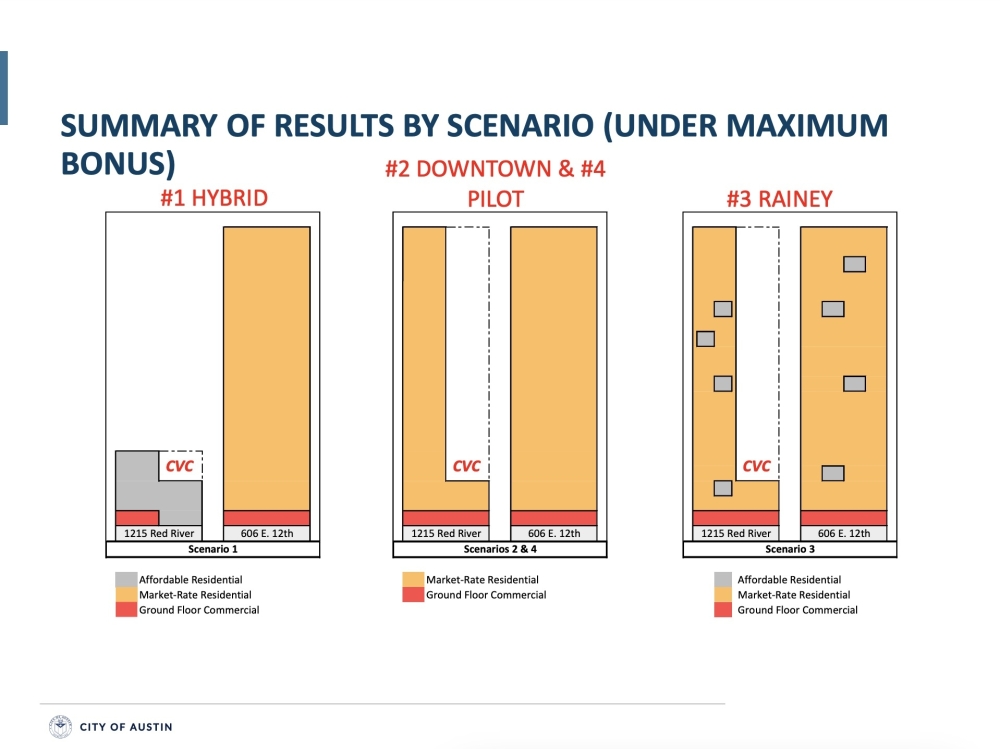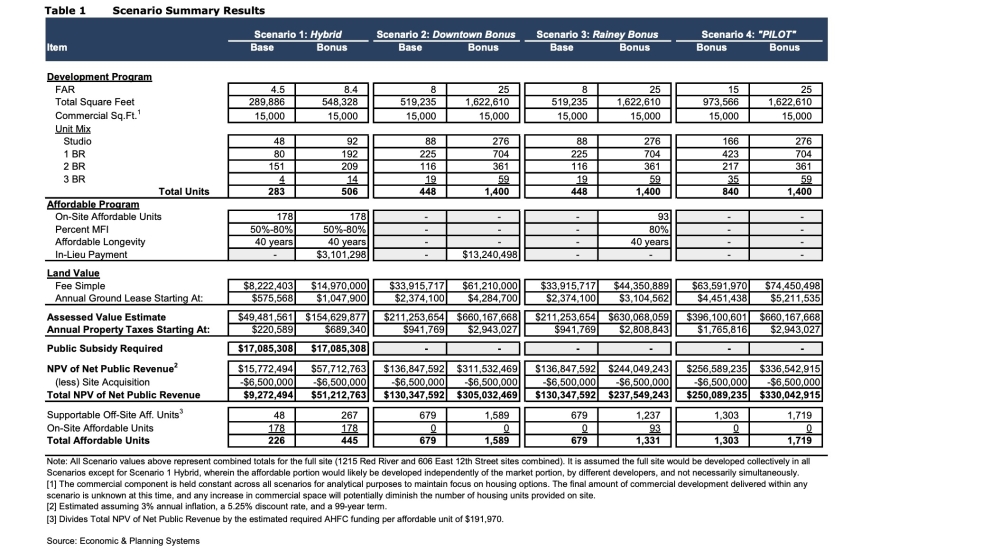How we got here
HealthSouth's former medical facility at 1215 Red River St. and an adjacent parking structure at 606 E. 12th St. were acquired by Austin in the mid-2010s. Since then, city leaders have intended to transform the site into a prominent development featuring affordable housing that they've said is much needed downtown.
Years of planning and negotiations led the city to try partnering with Aspen Heights Partners on a pair of high-rise towers with almost 1,000 residences spread between them, in addition to other public amenities and cultural space.
However, talks between Austin and Aspen Heights fell apart last year, ending that vision for the HealthSouth site's redevelopment.
Council then went on to direct city staff to come up with new possibilities for the site's use. The city is also now demolishing the site, beginning with the parking structure, to clear the way for future construction.
Current situation
The council-requested analysis from Economic & Planning Systems, Inc. was released in late January and produced four different development scenarios for the downtown property. Officials were briefed on those options Feb. 27.
As outlined by EPS, the city's choices vary in scope and the amount of housing provided, with only two featuring any onsite affordable spaces.
The scenarios account for differing uses of civic funds, the leasing structure for the city-owned properties and the long-range property tax revenues. The city would likely partner with a private builder and keep ownership of the land when moving any project forward.
According to EPS analysts, Austin's viable strategies for redevelopment include:
- Hybrid model: A low-rise affordable housing complex with 178 affordable units for tenants earning 50% to 80% of Austin's median family income, or MFI, alongside a residential tower with 328 market-rate units. An additional city subsidy of more than $17 million could help fund 267 more income-restricted units to be located elsewhere in Austin.
- Downtown Density Bonus Program model: A market-rate residential complex with around 1,400 units. Over many years, city development fees, lease payments and tax revenue could help fund an estimated 1,589 affordable units elsewhere.
- Payment in lieu of taxes (PILOT) model: A market-rate residential complex with around 1,400 units. Over time, a different city funding scheme could end up supporting more than 1,700 affordable units off-site.
- Rainey District bonus model: A residential complex with mostly market-rate housing, including 1,307 standard apartments mixed with 93 affordable units reserved for up to 80% MFI earners. Additional public revenue could support 1,237 more affordable units off-site.

A closer look
Interim Housing Director Mandy DeMayo said the best-case outlook for moving residents into the future residential complex would be in 2028 at the earliest. Any other affordable housing supported by the project but located off-site wouldn't be realized for “a decade or two," she said.
While council members in the past had expressed a desire for other community and cultural spaces at HealthSouth, such as child care facilities or arts and music venues, EPS considered only the high-level goal of affordable living space mixed with ground-floor commercial.
City officials would have to decide whether—or by how much—to trade off the more costly income-restricted housing for any other kinds of benefits in shaping a final project plan.
Today, the sites are appraised at around $17.73 million by the Travis Central Appraisal District. However, EPS estimates that their market value assuming large-scale development could fall between $58.14 million and $74.45 million depending on the city's approach.
Whether Austin contributes any subsidy for affordable housing, and how the city handles leasing and taxing its land, would also influence the final development. The EPS analysis found that hundreds of millions of city dollars could be involved over the coming decades.

DeMayo also noted that Austin is currently "significantly over-subscribed" with its subsidies for affordable housing, potentially affecting how some scenarios relying on city support could play out.
Council will next revisit plans for the future project later in 2024.





